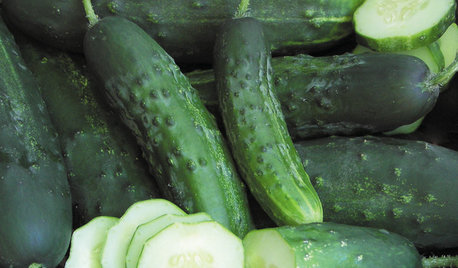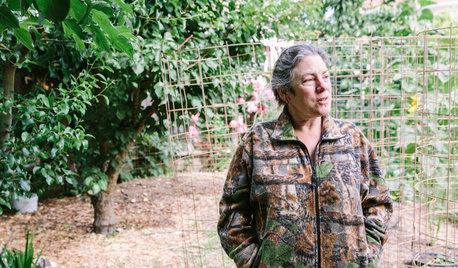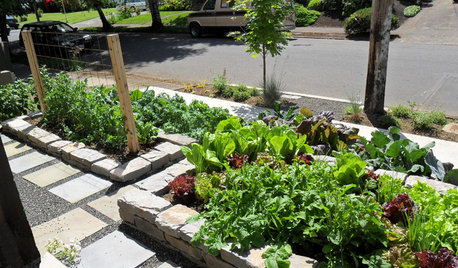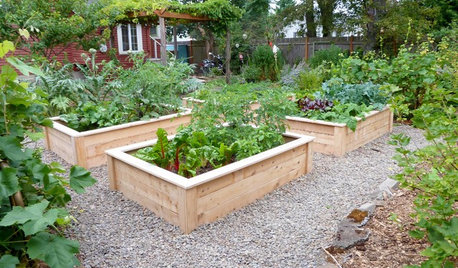How do you grow - cucumbers, squash, jalepenos, watermelons, okra
melissia
14 years ago
Related Stories

SUMMER FRUITS AND VEGETABLESSummer Crops: How to Grow Cucumbers
Pick a peck for pickles or opt for fewer and raw — no matter how you slice them, cucumbers are great for summer gardens small to large
Full Story
EDIBLE GARDENSSummer Crops: How to Grow Watermelons
You might not need as much space as you think to get this summer mainstay to spring up in your garden
Full Story
EDIBLE GARDENSHouzz Call: What Did You Grow This Summer?
Let’s celebrate the homegrown fruits and vegetables of the season. Post your pictures and tell us about your harvest
Full Story
FARM YOUR YARD6 Things to Know Before You Start Growing Your Own Food
It takes time and practice, but growing edibles in the suburbs or city is possible with smart prep and patience
Full Story
EDIBLE GARDENSHow to Grow Your Own Sweet Summer Crops
This guide will help any gardener get started on growing the freshest warm-season veggies and berries for summer
Full Story
FARM YOUR YARDTo Get the Food They Believe In, These Urbanites Grow Their Own
Home gardeners farming on their city lots find that local, organic food isn’t the only reward
Full Story
FARM YOUR YARDHouzz Call: Home Farmers, Show Us Your Edible Gardens
We want to see where your tomatoes, summer squashes and beautiful berries are growing this summer
Full Story
GARDENING GUIDESSeeds or Seedlings? How to Get Your Garden Started
Growing delicious herbs and vegetables starts with knowing your goals and when you want to plant
Full Story
FRONT YARD IDEASWelcome Edibles Into the Front Yard for Fresh Food and More
Give your front yard design a boost and maybe even make new friends by growing fruits and vegetables
Full Story
GARDENING GUIDES12 Tips to Help You Start an Edible Garden
Get on your way to growing your own vegetables with a raised bed or a few containers on the patio
Full StoryMore Discussions






okiegarden
Okiedawn OK Zone 7
Related Professionals
Windham Landscape Architects & Landscape Designers · New Mexico Landscape Architects & Landscape Designers · Willowick Landscape Architects & Landscape Designers · Americus Landscape Contractors · Doctor Phillips Landscape Contractors · Fuquay-Varina Landscape Contractors · Glendale Heights Landscape Contractors · Goodlettsville Landscape Contractors · Hickory Hills Landscape Contractors · Placerville Landscape Contractors · Pompano Beach Landscape Contractors · West Coon Rapids Landscape Contractors · West Covina Landscape Contractors · Adrian Decks, Patios & Outdoor Enclosures · Del City Decks, Patios & Outdoor EnclosuresmelissiaOriginal Author
Okiedawn OK Zone 7